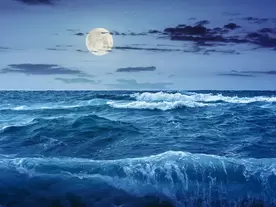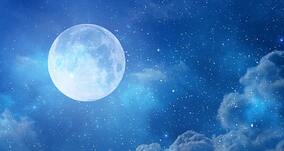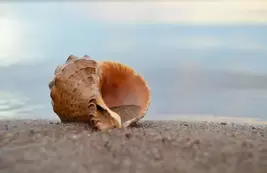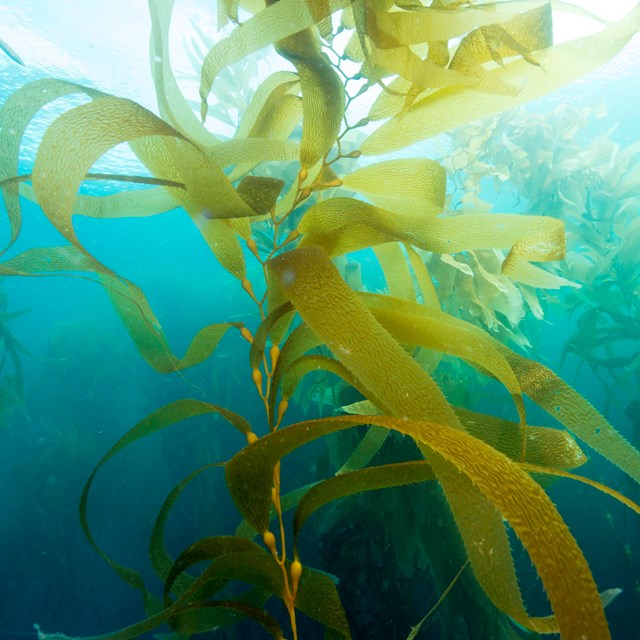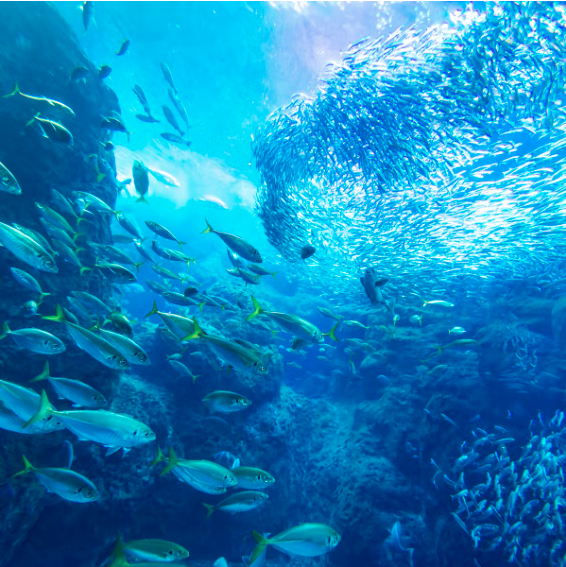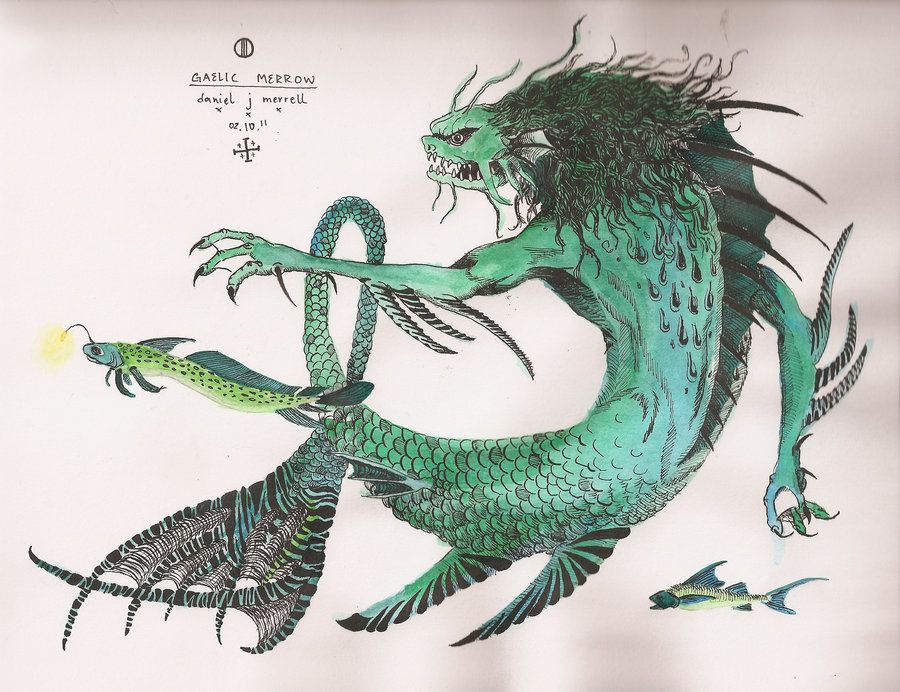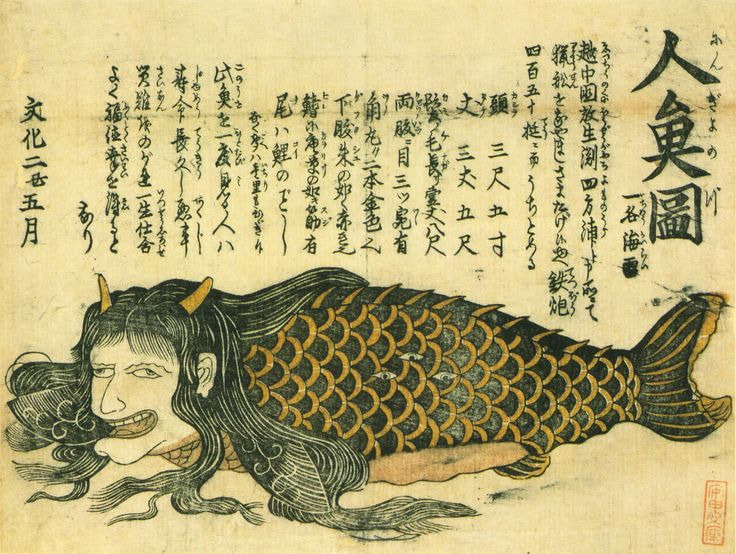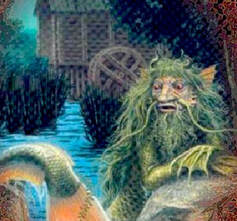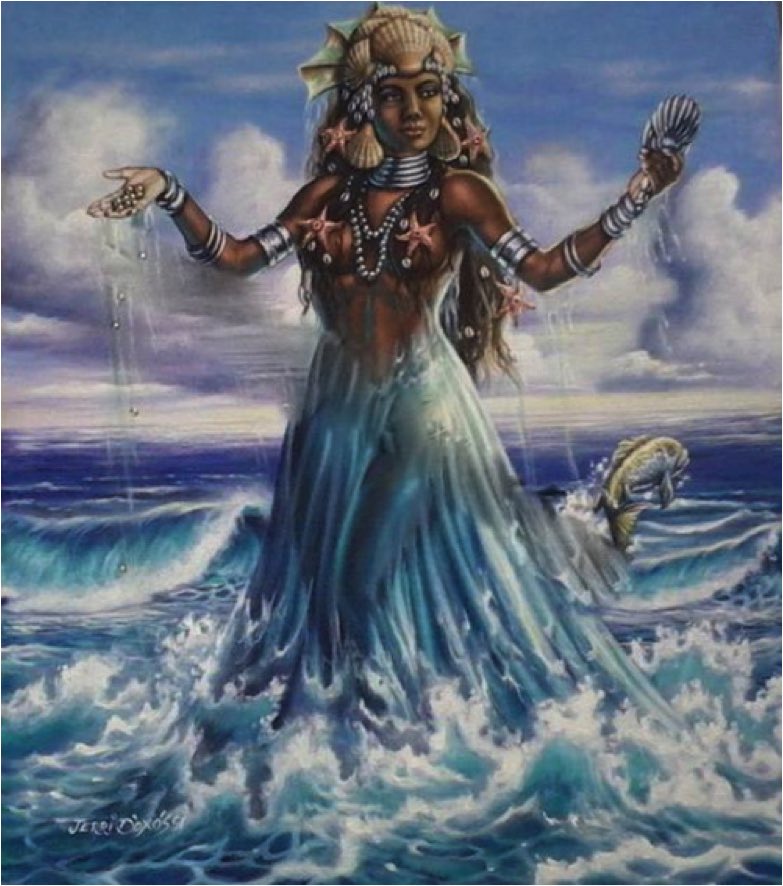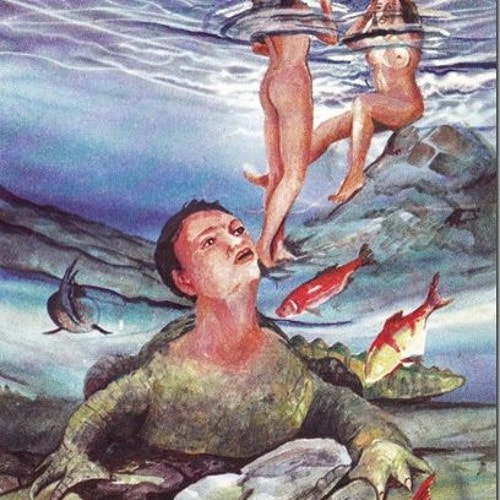Welcome to the
|
Ocean WisdomUnderstanding and working with tidal rhythms is an integral aspect of understanding Ocean wisdom. Our inner and outer worlds are influenced by tides. There are cosmic tides, and oceanic tides which effect our bio-rhythms. The Ocean possesses its own unique mana, and it is the womb where all life on this planet ultimately began. The Ocean is the mother of us all, and She represents nurturance of life, and cycles.
Water WisdomThe Earth is made up of 97% water. Humans rarely think of it this way, but the Earth is a water world. An adult human body is made up of approx 60% water. There is more water in us and around us than any other element in the universe! Water offers us wisdom and teachings on how to live in right relationship with each other and the planet. Understanding the nature of water, in all of its forms and manifestations is how we merfolk learn our water magic.
|
Moon WisdomThe moon is the generator of most ocean tides. Womens' menstrual cycles often synch to moon phases, and many water beings function based on these phases as well. The mana of the moon also influences psychic , and intuitive abilities and understanding these phases can help enhance manifestation and healing efforts.
Seashell WisdomThere are roughly 120,000 known species of sea shells on the planet but the majority of the Ocean remains unexplored. Seashells are the skeletal remains of shellfish. These unique marine animals play a significant role in Oceanic ecosystems. Many are currently endangered due to pollution, over fishing, and development.
When they shellfish die their shells are washed back and forth by the waves, eventually breaking down becoming sand. This process is how beaches. are created! Since the dawn of humanity, people have ascribed magical and mystical properties to seashells. They have served as formal currency in many cultures and societies, and they have historically shaped entire class and economic systems . Seashells also play a significant role in cosmological understandings of creation and nature. Many cultures around the world have origin stories about shellfish. Seashells, like water have their own unique mana, and are teachers in the natural world. Their attributes and abilities each serve as a guide serving as our aquatic oracles. |
|
|
Wisdom of the Waterfolk
The term waterfolk refers to all beings which reside in or around water. These beings may be microscopic, or as grand as the blue whale. Waterfolk includes water beings of past and present, mythological and spiritual such as merfolk. However, waterfolk also includes beings that many humans may not recognize as 'beings' such as coral families, sea plants, tardigrades, and even prokaryotes. There are almost an infinite amount of waterfolk that exist. Each type offers its own unique knowledge and teachings. Developing a spiritual and psychic connection to these beings is helpful in getting them to share their wisdom with you. Such relationships take time, and are built on trust. Communing with these beings in a meaningful way will rarely come about from a place of self-interest, or ego. Anyone with pure intention and heart may seek out their teachings, but be aware such an endeavor often requires deep commitment, and willingness to work through ones own shadow aspects of the self.
Merfolk
Merfolk are a type of waterbeing. Not all merfolk are mermaids, or mermen specifically. Merfolk is a broader term used to describe a type of waterfolk who often possess some humanoid characteristics or traits. There are many types of merfolk, and their appearance and nature will change depending on the region of the world they reside, or the human cultures where their legends derive. Many people of Western European tradition are familiar with the image of the beautiful mermaid with long flowing hair, singing a haunting tune upon a rock gazing off into the oceanic horizon. Although this is certainly one type of merfolk being, the majority of the merfolk throughout history and folklore look and behave very different. However, one characteristic trait of merfolk that seems to be consistent across cultures and regions is the ability for merfolk to shape-shift.
Humans have often projected their own moral/religious paradigms and philosophies onto merfolk. Many folklore will describe these beings as "dark" , "evil", or "man-eaters". This is an anthropocentric error. Merfolk are no more evil than a shark or a jellyfish. Can a shark or a jellyfish hurt a human? Yes of course, because this is simply their nature. Humans are often surprised to discover that the natural world does not revolve around them. Humans are a part of, but not the totality of, natural existence on Earth. Merfolk are not evil, they just are. Understand them, respect them for what they are and do not project your human sensibilities onto them. They are not from your realm, they do not operate by your norms, or etiquettes, nor are they motivated by the things humans often occupy their attention with. Like all beings, merfolk possess unique natures and are very diverse.
Working with the merfolk is no easy endeavor. Like most beings such relationships may take time to develop and come with their own share of risks. It is helpful to first dive deep into merfolk mythology and folklore and become more familiar with their attributes and types. Understand that all narratives are shared through a culture, and socio-political lens of their time. Understand how historical context shapes the evolution of mythology, and you will be able to better understand their natures.
Humans have often projected their own moral/religious paradigms and philosophies onto merfolk. Many folklore will describe these beings as "dark" , "evil", or "man-eaters". This is an anthropocentric error. Merfolk are no more evil than a shark or a jellyfish. Can a shark or a jellyfish hurt a human? Yes of course, because this is simply their nature. Humans are often surprised to discover that the natural world does not revolve around them. Humans are a part of, but not the totality of, natural existence on Earth. Merfolk are not evil, they just are. Understand them, respect them for what they are and do not project your human sensibilities onto them. They are not from your realm, they do not operate by your norms, or etiquettes, nor are they motivated by the things humans often occupy their attention with. Like all beings, merfolk possess unique natures and are very diverse.
Working with the merfolk is no easy endeavor. Like most beings such relationships may take time to develop and come with their own share of risks. It is helpful to first dive deep into merfolk mythology and folklore and become more familiar with their attributes and types. Understand that all narratives are shared through a culture, and socio-political lens of their time. Understand how historical context shapes the evolution of mythology, and you will be able to better understand their natures.
Are merfolk real?
According to the National Geographic Society, More than 80 percent of the ocean has never been mapped, explored, or even seen by humans. A far greater percentage of the surfaces of the moon and the planet Mars has been mapped and studied than of our own ocean floor. Additionally, every culture and human society across time and history has tales and stories of their encounters with merfolk. Cultures and societies that have had no contact with each other, who were separated by oceans have described similar experiences and encounters with merfolk. Only human arrogance would suggest their existence is not possible.
That being said... there is another, more mystical side to working with merfolk archetypes. To understand this, one must understand the role of thought form creation and archetypal energy work. In the mystical and occult traditions, thought forms are sometimes referred to as Egregors. These are non-physical entities which are generated through individual or collective thought. They are powerful psychic forms which at times can actually take on corporeal form and manipulate matter. These thought forms can interact with this world and can serve as powerful aids to mystics, magicians, witches, priestesses, mages, shamans, and medicine people. They can behave as individual and unique entities, but they are ultimately an extension of the consciousness of their creator. Many so called 'hauntings' or 'poltergeist' activity are actually a result of such thought forms. Though most of these have been created subconsciously by individuals experiencing trauma, abuse or extreme negativity. These types of egregores tend to be a result of an accumulation of concentrated negative thoughts and feelings directed at a person or place. Thought forms are created through high concentrations and focus of emotion, will and intent, be it positive, negative, or neutral.
All human beings possess the ability to create thought forms, as this is a natural law of consciousness and manifestation. In fact many people create them all the time unconsciously or subconsciously. Encounters with 'angels' or helpful 'protectors' intervening into human affairs are examples of 'positive' thought forms. Many individuals are not informed about the nature of consciousness, and the little they do know is often rooted in fear due to the false teachings of some religions.
Often times people relegate mystical or "paranormal" experiences as something happening "outside themselves" and are quick to blame "demons" or some other evil spirit. When positive mystical experiences occur, it is often assumed Angels are at work on behalf of God, never realizing that it is we who are acting as the divine channels of both positive and ill will. This knowledge requires an extraordinary amount of responsibility, and personal accountability--something people are often uncomfortable with, so it becomes easier to assign responsibility to gods and demons.
It must be understood, that 'magic' is simply the science and art of causing change to occur in conformity with Will. In traditional regions "magic" is done through prayer, even though many of these traditions would not think of themselves as engaging in a magical practice. The tools and methods of causing change to occur in conformity to will are many and diverse. The tools used to help the process of magic only matter in the sense of how they symbolically assist ones ability to focus ones will. Individuals who have mastered their faculties of consciousness do not require the use of tools.
The energies which allow "magic" to occur are neutral forces. It is the individual values, intent, and personal moral codes of a person which will determine the nature of how magic is used. Thought forms are extensions of ones will, intent, and emotions. When these aspects of consciousness are mastered, one can consciously create any thought form... Including magical, and mystical beings. Merfolk can be made manifest as egregores, but such a task should not be taken lightly, nor should it be attempted by anyone who has not yet mastered their own shadow work. When made manifest, these thought forms will interact, and engage with you, and you can have very "real" experiences with them. However, an egregore will always manifest as a caricature of the self. These thought forms will magnify any un-dealt with, subconscious emotions and/or thoughts. Creating them without this awareness can have unintended negative consequences.
Additionally, one may be able to summon or call-upon thought forms which already exist. These are older more power thought forms which which have been made manifest by collective consciousness. Examples of these are the merfolk beings of lore and legend. These older thought forms have evolved and have grown in intelligence through collective manifestation over time. These thought forms will feel like independent consciousnesses separate from ones own, because they are. They are also more difficult to will away, and can not be dissipated they way a self-created thought form can be. These thoughts forms are NOT an extension of your individual consciousness, but of the collective. It is extremely important one understands the will, intent, and nature of these thought forms before calling upon them and interacting with them. Their purpose is anchored into the will of their collective creators. This is why historical context and cultural competence are extremely important when working with archetypal energies.
*It should be noted that thought forms are distinct and not the same as elemental or nature beings. Elemental and nature beings are not creations of consciousness, but independent living energies of the natural world.
So...are merfolk real? In the book Harry Potter and the Deathly Hallows, Harry asks Dumbledore when they are speaking to each other in the realm in between life and death, "Tell me one last thing...Is this real? Or has this been happening inside my head.?" Dumbledore responds, "Of course it is happening inside your head, Harry, but why on earth should that mean it is not real?"
That being said... there is another, more mystical side to working with merfolk archetypes. To understand this, one must understand the role of thought form creation and archetypal energy work. In the mystical and occult traditions, thought forms are sometimes referred to as Egregors. These are non-physical entities which are generated through individual or collective thought. They are powerful psychic forms which at times can actually take on corporeal form and manipulate matter. These thought forms can interact with this world and can serve as powerful aids to mystics, magicians, witches, priestesses, mages, shamans, and medicine people. They can behave as individual and unique entities, but they are ultimately an extension of the consciousness of their creator. Many so called 'hauntings' or 'poltergeist' activity are actually a result of such thought forms. Though most of these have been created subconsciously by individuals experiencing trauma, abuse or extreme negativity. These types of egregores tend to be a result of an accumulation of concentrated negative thoughts and feelings directed at a person or place. Thought forms are created through high concentrations and focus of emotion, will and intent, be it positive, negative, or neutral.
All human beings possess the ability to create thought forms, as this is a natural law of consciousness and manifestation. In fact many people create them all the time unconsciously or subconsciously. Encounters with 'angels' or helpful 'protectors' intervening into human affairs are examples of 'positive' thought forms. Many individuals are not informed about the nature of consciousness, and the little they do know is often rooted in fear due to the false teachings of some religions.
Often times people relegate mystical or "paranormal" experiences as something happening "outside themselves" and are quick to blame "demons" or some other evil spirit. When positive mystical experiences occur, it is often assumed Angels are at work on behalf of God, never realizing that it is we who are acting as the divine channels of both positive and ill will. This knowledge requires an extraordinary amount of responsibility, and personal accountability--something people are often uncomfortable with, so it becomes easier to assign responsibility to gods and demons.
It must be understood, that 'magic' is simply the science and art of causing change to occur in conformity with Will. In traditional regions "magic" is done through prayer, even though many of these traditions would not think of themselves as engaging in a magical practice. The tools and methods of causing change to occur in conformity to will are many and diverse. The tools used to help the process of magic only matter in the sense of how they symbolically assist ones ability to focus ones will. Individuals who have mastered their faculties of consciousness do not require the use of tools.
The energies which allow "magic" to occur are neutral forces. It is the individual values, intent, and personal moral codes of a person which will determine the nature of how magic is used. Thought forms are extensions of ones will, intent, and emotions. When these aspects of consciousness are mastered, one can consciously create any thought form... Including magical, and mystical beings. Merfolk can be made manifest as egregores, but such a task should not be taken lightly, nor should it be attempted by anyone who has not yet mastered their own shadow work. When made manifest, these thought forms will interact, and engage with you, and you can have very "real" experiences with them. However, an egregore will always manifest as a caricature of the self. These thought forms will magnify any un-dealt with, subconscious emotions and/or thoughts. Creating them without this awareness can have unintended negative consequences.
Additionally, one may be able to summon or call-upon thought forms which already exist. These are older more power thought forms which which have been made manifest by collective consciousness. Examples of these are the merfolk beings of lore and legend. These older thought forms have evolved and have grown in intelligence through collective manifestation over time. These thought forms will feel like independent consciousnesses separate from ones own, because they are. They are also more difficult to will away, and can not be dissipated they way a self-created thought form can be. These thoughts forms are NOT an extension of your individual consciousness, but of the collective. It is extremely important one understands the will, intent, and nature of these thought forms before calling upon them and interacting with them. Their purpose is anchored into the will of their collective creators. This is why historical context and cultural competence are extremely important when working with archetypal energies.
*It should be noted that thought forms are distinct and not the same as elemental or nature beings. Elemental and nature beings are not creations of consciousness, but independent living energies of the natural world.
So...are merfolk real? In the book Harry Potter and the Deathly Hallows, Harry asks Dumbledore when they are speaking to each other in the realm in between life and death, "Tell me one last thing...Is this real? Or has this been happening inside my head.?" Dumbledore responds, "Of course it is happening inside your head, Harry, but why on earth should that mean it is not real?"
Merfolk of the world
This is not an exhaustive list, but does offer a diverse listing of merfolk from around the world! Know of one not listed here? Feel free to reach out and share it with me and I will add it to the list!
AFRICA: MAMI WATA AND ORISHAS
Mami Wata (Mother Water) is an African spiritual tradition that encompasses worship of a pantheon of water spirits. Especially popular in South East Nigeria among the Efik, Ibibio, Igbo and Annang people, trading routes expanded Mami Wata's influence across a region stretching from Senegal to Zambia. Mami Wata is said to live in rivers, lakes, and other bodies of water. Mami Wata has several manifestations. She is usually portrayed as a human-like creature, beautiful and seductive, but she can also take on the form of a snake or a fish. She is often associated with wealth and prosperity. She is also said to have the power to heal the sick and grant wishes. She is also known to be very jealous, and is said to punish those who cross her. Despite her dangerous side, she is also seen as a benevolent figure who helps those in need.
- Smithsonian National Museum of African Art https://africa.si.edu/exhibits/mamiwata/intro.html
-Black Pepper Magazine (2022)
Much of mermaid legends and imagery throughout the world have been shaped by the traditions and people of the African Diaspora. Orishas serve as intermediates between humankind and transcendent forces. Yorubaland is a region of West Africa which includes western and southwestern Nigeria, Benin, Ghana, Togo, and the Gulf of Guinea. This geographic region is comprised of many rivers and waters. Yemaya is an Orisha water goddess sometimes referred to as Queen of the Sea, Mother of all Living Things, and/or Mother of Fishes. She is a protector of women and children, and is often portrayed as a mermaid. Yemaya is often associated with the color blue, which is said to represent the depths of the ocean. She is also associated with the moon. Yemaya is a powerful goddess who is revered by many. She is a symbol of fertility, nurturing, and protection. -Raven Morgaine (2021)
AUSTRALIA: MULDJEWANG
The Muldjewangk comes from Australian Aboriginal lore. It is said that these beings inhabit the Murray River of South Australia and are often hiding under large clumps of seaweed. They are described as a giant half-man, half-fish creatures with enormous hands. The Muldjewangk are said to use their giant hands to disrupt and sink ships. Tales of these creatures attacking boats were often used as night time stories to warn children of not hanging out along the river banks after dark. Accounts are inconsistant as to whether the Muldjewangks are a species of creature, or a single being.
BRAZIL: IPUPIARA
The Ipupiara or Hipupiara, also called sea-man, is a species of marine monster that was part of the mythology of the Tupi peoples who inhabited the coast of Brazil in the 16th century. According to popular belief, he attacked people and ate parts of their bodies. According to reports from when the time Brazil was a colony, an Ipupiara was found and killed in the captaincy of São Vicente, in the year 1564. The Portuguese historian and chronicler Pero de Magalhães Gandavo would have described the creature as having "fifteen feet long and sown hair on the body, and on the muzzle there were very large bristles, like mustaches." The being was killed by a sharp thrust in the abdomen and then dragged well away from the water to dry. Other stories say the creature was known to kill its victims by a powerful hug, bursting men inside - like the constricting serpents. The corpses of those who suffered from Ipupiara's fury were found almost intact. The monster, after all, did not eat its victims.
FIRST NATIONS PEOPLE CANADA: MEMEGWESI
Tales of the Memegwesi come from the Ojibway, Cree, Algonkin, Innu, Metis, and Menominee First Nations peoples of Canada. The Memegwesi are small riverbank-dwelling water spirits. They are generally benign creatures, but sometimes blow canoes astray or steal things when they are not shown proper respect. In some Ojibwe traditions, Memegwesi can only be seen by children and medicine people; in others, they can appear to anyone, and may help humans who give them tobacco and other gifts. Most often Memegwesi are described as being child-sized and hairy with a large head and a strange voice that sounds like the whine of a dragonfly. The Cree and Innu describe them as having narrow faces, and some Menominee storytellers have said that they have no noses. It is sometimes said that Memegwesi were originally created from the bark of trees. Memegwesi are said to carve symbols on rocks and sometimes carve small canoes for themselves out of stone. Some people believe that their name comes from the Ojibwe word for "hairy," memii, since Memegwesi are usually described as having hairy faces and bodies. Other people believe that their name is related to the word for butterfly, memengwaa. The peoples of Ojibway, Algonquin, Potawatomi and Menomini also share tale of the The Nibiinaabe, a race of water sprites from Anishinabe folklore. Nibinabe are usually described as being shaped like mermaids, with human torsos and fish tails. They are said to be frightened off by loud noises.
-http://www.native-languages.org/memegwesi.htm
CAMEROON: JENGU
A Jengu (plural Mlengu) is a water spirit in the tradtional beleifs of the Sawa ethnic groups of Cameroon, particularly the Duala, Bakweri, Malimba, Batanga, Bakoko, Oroko people and related Sawa peoples. Miengus' appearance will vary among cultural groups, but typically they are described as beautiful maidens with mermaid-like features; long hair, and beautiful gap-teeth. They live in rivers and seas and bring good fortune to those who worship them. They can also cure diseases and act as intermediaries between humankind and the world of spirits.
CHINA: HAI HO SHANG
According to descriptions, Hai Ho Shang has the body of a fish and the head of a human man-- usually described as being like a buddhist monk with a shaved head. The merman-like being is said to be wearing a long robe but has the body of a fish tail. These creatures were said to sink ships and drown crew members. It is said that the only way to prevent the Hai Ho Shang from sinking ones ship is to perform a very specific ritual dance with feathers. Sailors would often learn this dance as a means to protect themselves and fellow crew members. The dancer would carry with them a stick tied with ribbons and a gong would be used for music. Feathers were also burnt during the dance. The burning feathers would give off a putrid smell that is said to disgust Hai Ho Shang who would immediately then retreat.
COLOMBIA: EL HOMBRE CAIMÁN
El Hombre Caimán (The Alligator Man) is a legend from the Caribbean coast of Columbia that takes place in the riverside town of Plato: Saúl Montenegro’s passion for spying on naked women turned into a being with the head of a man and the body of an alligator. Montenegro liked to watch the women who bathed in the waters of the Magdalena River but feared being caught watching from among the trees. He went to a witch in Alta Guajira for a potion to turn himself into an alligator so that the bathers would not suspect him and he could admire them as much as he wished. The witch gave him two potions: a red one that turned him into an alligator, and a white one that turned him back. Montenegro enjoyed this for some time. On one occasion, the friend who often accompanied him with the white potion could not come. In his place another man came and this man, when he saw him in his alligator form, became frightened and dropped the bottle of white potion that would make him a man again. Most of it spilled, but some of the liquid splashed on Saúl's head, and his head changed back but his body remained that of an alligator. After this, women were too afraid to bathe in the river. Only his mother dared approach him. Every night she came to the river to comfort him, and bring him his favorite foods: cheese, cassava (yucca), and bread soaked in rum. His mother eventually died of sadness, unable to find the witch who had made the potions.
CELTIC/IRELAND: MERROW
Merrow (from the Irish Muruch) is a mermaid or merman, who needs a magical cap (cohuleen druith) in its possession in order to travel between deep water and dry land. In the land of the ancient Celts, they were described as beautiful mortal women swimming in the sea. The term Merrow applies to both the male and female of the species. They are said to dwell in Tír fo Thuinn, or “The Land beneath the Waves.” Merrow men were said to be hideously ugly to the point that the mermaids refused to take them as mates. Little is known about Merrow except that their bodies were covered in emerald scales with stunted limbs and green hair. It is said they are so bitter over their appearance and loneliness that they capture the spirits of drowned sailors and keep them incarcerated under the sea in a desperate attempt at revenge. Merrow women, on the other hand, were beautiful, with long radiant hair and glistening scales on their tails. They preferred the company of the human men to those of their hideous species. Many human men have been seduced by these mystical creatures over time. Those with the surnames of O’Flaherty and O’Sullivan in County Kerry and County Clare are believed to descend from such unions. -Christina Neary (2021)
EUROPE: MELUSINE
The story of Melusine dates from the late fourteenth-century, but has its origins in many human-hybrid folktales of the oral tradition. Melusine, is a daughter of a human father and a fairy mother. Having transgressed against her father, she was cursed by her mother, the fairy Presine, to turn into a serpent every Saturday. Her only hope of salvation was to find a man who would love her enough to a) respect her privacy every Saturday; and b) if he ever did find out that she was part serpent, to ignore this fact and keep her secret. Throughout time Melusine has come to represent the spirit of fresh water, and she is usually depicted as a woman who is a serpent or fish from the waist down, much like the mythical mermaid. She is also frequently illustrated with two tails. The image of Melusine is so famous and enduring that, perhaps without knowing her by name, we still recognize her image today as the logo for Starbucks Coffee. The legends of Melusine are especially connected with the northern and western areas of France, Luxembourg and the Low Countries. Her name derives from Mère Lusine (“Mother of the Lusignans”), connecting her with Cyprus, where the French Lusignan royal house that ruled from 1192 to 1489 and claimed to be her descendants. The legend of Melusine, therefore, is related to the territorial and dynastic expansion of her descendants beyond Lusignan across the Mediterranean to distant Armenia during the crusades (1095 – 1291).
https://mythicalcreatures.edwardworthlibrary.ie/melusine/
https://www.ancient-origins.net/myths-legends/secret-life-melusine-mysterious-mermaid-serpent-mother-european-nobility-007815
GERMANY: LORELEI
Lorelei (aka Loreley) is legendary German siren (often depicted with a mermaid tail), who was created by Clemens Brentano in 1801. The story claims that there was once a beautiful maiden named Lorelei who waited for her lover on a rock at the narrowest and shallowest point of the Rhine River. He never returned, so she jumped off the rock to her death. The legend is that her spirit remains at the rock, seeking revenge against her unfaithful lover. She sits on the rock, now named after her, combing her long hair and singing softly. Sailors are so enchanted by her beauty that they crash their ships into the rock or run aground in the shallow water. Heinrich Heine created a poem about her in 1822. It is this particular legend that has influenced much of the Western narratives and descriptions of mermaids in pop culture.
GREECE: SCYLLA
The story of the Scylla dates back to ancient Greece. There are a few different versions of the legend. According to mythology, Scylla was once a beautiful sea nymph who had a love affair with Poseidon. Out of a jealous rage, Amphitrite put a potion in the pool where Scylla bathed that t urned her into a six-headed sea monster with a fish tail and dog heads sprouting from her body.
NORTHERN EUROPE: SELKIES
Selkie legends stem from Norse and Celtic mythology. Some believe these legends originated after Norse and Celtic peoples had interactions with the nomadic Sami people who often wore seal skins and traveled along remote coastal shores. Selkies are shape shifting seal people. To come ashore they must shed their seal skins and become human. It is said that the only way for a selkie to be able to stay ashore is for a human to find their seal skin and hide it from them. In human form, selkies are said to be very attractive and have a powerful allure for humans. Norse and Celtic folklore is littered with tales of men and women (usually men) finding a selkie skin and hiding it, then marrying the selkie woman and having children. Often these tales end in woe, when the selkie eventually finds her seal skin and takes off to return to the sea leaving the partner and children behind.
POLYNESIA: MOANA-NUI-KA-LEHUA
The Disney movie Moana was based on a real Polynesian legend of the water/goddess mermaid Moana-Nui-Ka-Lehua. According to Hawaiian legend, Moana resided in the ocean between the two islands of K’aui and O’ahu. It was Moana’s duty to guard the Ka’ie’ie Channel with the help of two two shark gods named Kuna and Kahole-a-Kane. According to some legends, Moana appeared as a fish, while in others she was as a half-human half-fish hybrid (mermaid). Moana had the power to summon storms whenever she wanted. Moana was described as mischievous and playful. She is also said to have prevented the marriage between the volcano/fire goddess Pele and the human, Lohiau by brewing a storm, so that the couple couldn’t go beyond the reef to be married. However, there was one god, who could match Moana and that was Maui. Moana met the fisherman god, Maui (the island of Maui is named after him), when she found him fishing in her waters. She snatched his fishhook from the rock it was sitting on. Maui, was known for being a trickster god and wasn’t going to take Mauna stealing his fishhook lightly. So, he pursued Moana, until he was able to capture her. Maui, then brought Moana to shore, where she passed away. Maui, paid his respects to the mermaid goddess by burying her body and built a shrine in her honor. Moana’s spirit was metamorphosed into a oli’a lehua, which is one of Hawaii’s most sacred trees.
https://historyofmermaids.com/mermaid/polynesian/#:~:text=The%20Legend%20of%20Moana%2DNui%2DKa%2DLehua&text=Moana%2DNui%2DKa%2DLehua%20was%20a%20Polynesian%20water%20goddess,and%20Kahole%2Da%2DKane.
SLAVIC EURASIA: RUSALKA
Rusalka, (plural Rusalki) in Slavic mythology, is a lake-dwelling soul of a child who died unbaptized or of a virgin who was drowned (whether accidentally or purposely). Slavs of different areas have assigned different personalities to the rusalki. Around the Danube River, where they are called vile (singular vila), rusalki are depicted as beautiful, charming girls, dressed always in light robes of mist, singing sweet, bewitching songs to the passersby. The rusalki of northern Russia are depicted as ugly, unkempt, wicked, invariably naked, and always eager to ambush humans. All rusalki love to entice men—the vile to enchant them and the northern rusalki to torture them. During rusalki week, at the beginning of the summer, the nymphs are supposed to emerge from the water and climb into weeping willow and birch trees until night, when they dance in rings in the moonlight. Any person joining them must dance until he dies. After that week, grass grows thicker where they trod. Slavic mythology also tells of another water spirit called the Vodyanoi. This being frequents lakes, ponds, rivers, and other bodies of water. They may live in humble dwellings of sand and slimy logs, to underwater palaces illuminated by a magic stone which shines as bright as the sun. The Vodyanoi can vary in appearance and there is no consistent description as to what they actually look like. They are often described as being humanoid with big paws, horns, a tail and glowing eyes. In other descriptions the creatures are said to be like a large man covered in grass and moss with shaggy white fur or scales, or it can be black with huge red eyes and a long nose. In other descriptions they are bluish, slimy, frog-like, and crowned with reeds. Sometimes it appears in the form of a human, as an old man with green hair and beard that turned white with the waning moon, or as a white-bearded peasant in a red shirt, or as a naked voluptuous woman combing her dripping hair while seated on a log, or in the form of guardsmen and children. At times legends describe it as half fish and half human, or it can appear as a huge moss-covered fish. Other times is described as a swan, or even a bouquet of red flowers on the water. In Smolensk the vodyanoi is humpbacked and has the feet and tail of a cow, while in Vologda it is a log with little wings flying over the water. A vodyanoi out of the water and in human guise can be identified by the water oozing out of its coat. The vodyany-ye are immortal, but grow younger or older with the moon. They are weak on land, but virtually invincible in the water, and they dislike going out of the water beyond the bank or mill-wheel; some vodyany-ye refuse to emerge from water beyond the waist. They like to ride livestock until they die of exhaustion. They rest in their palaces during the day, and come out in the evening splashing the water with their paws, making a noise that can be heard over great distances. The Vodyany-ye hate humans and lurk in the water after sunset, dragging people in when the opportunity arises. Those they drown become their slaves, or if attractive enough... their wives.
https://abookofcreatures.com/2015/12/21/vodyanoi/
SOUTH AND SOUTH-EAST ASIA: NĀGA
Nāgas are a divine or semi-dvine race of half-human, half-serpent beings. The term Nāga comprises all kinds of serpentine beings. A female nāga is called a Nāgi, or a Nāgini. Nāgaraja is the title given to the king of the nāgas. These serpent beings are deities of the primal ocean, of mountain springs, of earth and the underworld. In Indian mythology, Nagas are primarily serpent-beings living under the sea. A large number of temples were built near springs and were dedicated to the worship of nāgas. These places have become great centers of religious pilgrimage. Some well-known Nāgas in South and Eastern Asian mythology include: Vaskui, the king, Mansa Devi, Vasuki's sister, and Kadru.
https://www.abuddhistlibrary.com/Buddhism/F%20Miscellaneous/Miscellaneous%20Buddhism/Nagas/I/Nagas.htm
SOLOMON ISLANDS: ADARO
The Adaro are merman-like sea spirits found in the mythology of Makira Island in the Solomon Islands. Adaro is a unique creature in the Pacific Ocean. Humans describe the Adaro as very dangerous. The being is said to arise from the wicked part of a person's spirit, which is divided between the Aunga (good) which dies, and the Adaro (evil) which stays as a ghost. The Adaro is described as a man with gills behind his ears, tail fins for feet, a horn like a shark's dorsal fin, and a swordfish or sawfish-like spear growing out of his head. They may also travel in Jaratep or Daretep waterspouts and along rainbows. They are said to kill unwary fishermen by firing flying poisonous fish at them. The Adaro can also visit a human in their dreams to teach them new song and dance. Their chief is name Ngorieru and they are said to live off the coast of San Christobal. Passing boats will use their paddles softly so as to not disturb them.
Mami Wata (Mother Water) is an African spiritual tradition that encompasses worship of a pantheon of water spirits. Especially popular in South East Nigeria among the Efik, Ibibio, Igbo and Annang people, trading routes expanded Mami Wata's influence across a region stretching from Senegal to Zambia. Mami Wata is said to live in rivers, lakes, and other bodies of water. Mami Wata has several manifestations. She is usually portrayed as a human-like creature, beautiful and seductive, but she can also take on the form of a snake or a fish. She is often associated with wealth and prosperity. She is also said to have the power to heal the sick and grant wishes. She is also known to be very jealous, and is said to punish those who cross her. Despite her dangerous side, she is also seen as a benevolent figure who helps those in need.
- Smithsonian National Museum of African Art https://africa.si.edu/exhibits/mamiwata/intro.html
-Black Pepper Magazine (2022)
Much of mermaid legends and imagery throughout the world have been shaped by the traditions and people of the African Diaspora. Orishas serve as intermediates between humankind and transcendent forces. Yorubaland is a region of West Africa which includes western and southwestern Nigeria, Benin, Ghana, Togo, and the Gulf of Guinea. This geographic region is comprised of many rivers and waters. Yemaya is an Orisha water goddess sometimes referred to as Queen of the Sea, Mother of all Living Things, and/or Mother of Fishes. She is a protector of women and children, and is often portrayed as a mermaid. Yemaya is often associated with the color blue, which is said to represent the depths of the ocean. She is also associated with the moon. Yemaya is a powerful goddess who is revered by many. She is a symbol of fertility, nurturing, and protection. -Raven Morgaine (2021)
AUSTRALIA: MULDJEWANG
The Muldjewangk comes from Australian Aboriginal lore. It is said that these beings inhabit the Murray River of South Australia and are often hiding under large clumps of seaweed. They are described as a giant half-man, half-fish creatures with enormous hands. The Muldjewangk are said to use their giant hands to disrupt and sink ships. Tales of these creatures attacking boats were often used as night time stories to warn children of not hanging out along the river banks after dark. Accounts are inconsistant as to whether the Muldjewangks are a species of creature, or a single being.
BRAZIL: IPUPIARA
The Ipupiara or Hipupiara, also called sea-man, is a species of marine monster that was part of the mythology of the Tupi peoples who inhabited the coast of Brazil in the 16th century. According to popular belief, he attacked people and ate parts of their bodies. According to reports from when the time Brazil was a colony, an Ipupiara was found and killed in the captaincy of São Vicente, in the year 1564. The Portuguese historian and chronicler Pero de Magalhães Gandavo would have described the creature as having "fifteen feet long and sown hair on the body, and on the muzzle there were very large bristles, like mustaches." The being was killed by a sharp thrust in the abdomen and then dragged well away from the water to dry. Other stories say the creature was known to kill its victims by a powerful hug, bursting men inside - like the constricting serpents. The corpses of those who suffered from Ipupiara's fury were found almost intact. The monster, after all, did not eat its victims.
FIRST NATIONS PEOPLE CANADA: MEMEGWESI
Tales of the Memegwesi come from the Ojibway, Cree, Algonkin, Innu, Metis, and Menominee First Nations peoples of Canada. The Memegwesi are small riverbank-dwelling water spirits. They are generally benign creatures, but sometimes blow canoes astray or steal things when they are not shown proper respect. In some Ojibwe traditions, Memegwesi can only be seen by children and medicine people; in others, they can appear to anyone, and may help humans who give them tobacco and other gifts. Most often Memegwesi are described as being child-sized and hairy with a large head and a strange voice that sounds like the whine of a dragonfly. The Cree and Innu describe them as having narrow faces, and some Menominee storytellers have said that they have no noses. It is sometimes said that Memegwesi were originally created from the bark of trees. Memegwesi are said to carve symbols on rocks and sometimes carve small canoes for themselves out of stone. Some people believe that their name comes from the Ojibwe word for "hairy," memii, since Memegwesi are usually described as having hairy faces and bodies. Other people believe that their name is related to the word for butterfly, memengwaa. The peoples of Ojibway, Algonquin, Potawatomi and Menomini also share tale of the The Nibiinaabe, a race of water sprites from Anishinabe folklore. Nibinabe are usually described as being shaped like mermaids, with human torsos and fish tails. They are said to be frightened off by loud noises.
-http://www.native-languages.org/memegwesi.htm
CAMEROON: JENGU
A Jengu (plural Mlengu) is a water spirit in the tradtional beleifs of the Sawa ethnic groups of Cameroon, particularly the Duala, Bakweri, Malimba, Batanga, Bakoko, Oroko people and related Sawa peoples. Miengus' appearance will vary among cultural groups, but typically they are described as beautiful maidens with mermaid-like features; long hair, and beautiful gap-teeth. They live in rivers and seas and bring good fortune to those who worship them. They can also cure diseases and act as intermediaries between humankind and the world of spirits.
CHINA: HAI HO SHANG
According to descriptions, Hai Ho Shang has the body of a fish and the head of a human man-- usually described as being like a buddhist monk with a shaved head. The merman-like being is said to be wearing a long robe but has the body of a fish tail. These creatures were said to sink ships and drown crew members. It is said that the only way to prevent the Hai Ho Shang from sinking ones ship is to perform a very specific ritual dance with feathers. Sailors would often learn this dance as a means to protect themselves and fellow crew members. The dancer would carry with them a stick tied with ribbons and a gong would be used for music. Feathers were also burnt during the dance. The burning feathers would give off a putrid smell that is said to disgust Hai Ho Shang who would immediately then retreat.
COLOMBIA: EL HOMBRE CAIMÁN
El Hombre Caimán (The Alligator Man) is a legend from the Caribbean coast of Columbia that takes place in the riverside town of Plato: Saúl Montenegro’s passion for spying on naked women turned into a being with the head of a man and the body of an alligator. Montenegro liked to watch the women who bathed in the waters of the Magdalena River but feared being caught watching from among the trees. He went to a witch in Alta Guajira for a potion to turn himself into an alligator so that the bathers would not suspect him and he could admire them as much as he wished. The witch gave him two potions: a red one that turned him into an alligator, and a white one that turned him back. Montenegro enjoyed this for some time. On one occasion, the friend who often accompanied him with the white potion could not come. In his place another man came and this man, when he saw him in his alligator form, became frightened and dropped the bottle of white potion that would make him a man again. Most of it spilled, but some of the liquid splashed on Saúl's head, and his head changed back but his body remained that of an alligator. After this, women were too afraid to bathe in the river. Only his mother dared approach him. Every night she came to the river to comfort him, and bring him his favorite foods: cheese, cassava (yucca), and bread soaked in rum. His mother eventually died of sadness, unable to find the witch who had made the potions.
CELTIC/IRELAND: MERROW
Merrow (from the Irish Muruch) is a mermaid or merman, who needs a magical cap (cohuleen druith) in its possession in order to travel between deep water and dry land. In the land of the ancient Celts, they were described as beautiful mortal women swimming in the sea. The term Merrow applies to both the male and female of the species. They are said to dwell in Tír fo Thuinn, or “The Land beneath the Waves.” Merrow men were said to be hideously ugly to the point that the mermaids refused to take them as mates. Little is known about Merrow except that their bodies were covered in emerald scales with stunted limbs and green hair. It is said they are so bitter over their appearance and loneliness that they capture the spirits of drowned sailors and keep them incarcerated under the sea in a desperate attempt at revenge. Merrow women, on the other hand, were beautiful, with long radiant hair and glistening scales on their tails. They preferred the company of the human men to those of their hideous species. Many human men have been seduced by these mystical creatures over time. Those with the surnames of O’Flaherty and O’Sullivan in County Kerry and County Clare are believed to descend from such unions. -Christina Neary (2021)
EUROPE: MELUSINE
The story of Melusine dates from the late fourteenth-century, but has its origins in many human-hybrid folktales of the oral tradition. Melusine, is a daughter of a human father and a fairy mother. Having transgressed against her father, she was cursed by her mother, the fairy Presine, to turn into a serpent every Saturday. Her only hope of salvation was to find a man who would love her enough to a) respect her privacy every Saturday; and b) if he ever did find out that she was part serpent, to ignore this fact and keep her secret. Throughout time Melusine has come to represent the spirit of fresh water, and she is usually depicted as a woman who is a serpent or fish from the waist down, much like the mythical mermaid. She is also frequently illustrated with two tails. The image of Melusine is so famous and enduring that, perhaps without knowing her by name, we still recognize her image today as the logo for Starbucks Coffee. The legends of Melusine are especially connected with the northern and western areas of France, Luxembourg and the Low Countries. Her name derives from Mère Lusine (“Mother of the Lusignans”), connecting her with Cyprus, where the French Lusignan royal house that ruled from 1192 to 1489 and claimed to be her descendants. The legend of Melusine, therefore, is related to the territorial and dynastic expansion of her descendants beyond Lusignan across the Mediterranean to distant Armenia during the crusades (1095 – 1291).
https://mythicalcreatures.edwardworthlibrary.ie/melusine/
https://www.ancient-origins.net/myths-legends/secret-life-melusine-mysterious-mermaid-serpent-mother-european-nobility-007815
GERMANY: LORELEI
Lorelei (aka Loreley) is legendary German siren (often depicted with a mermaid tail), who was created by Clemens Brentano in 1801. The story claims that there was once a beautiful maiden named Lorelei who waited for her lover on a rock at the narrowest and shallowest point of the Rhine River. He never returned, so she jumped off the rock to her death. The legend is that her spirit remains at the rock, seeking revenge against her unfaithful lover. She sits on the rock, now named after her, combing her long hair and singing softly. Sailors are so enchanted by her beauty that they crash their ships into the rock or run aground in the shallow water. Heinrich Heine created a poem about her in 1822. It is this particular legend that has influenced much of the Western narratives and descriptions of mermaids in pop culture.
GREECE: SCYLLA
The story of the Scylla dates back to ancient Greece. There are a few different versions of the legend. According to mythology, Scylla was once a beautiful sea nymph who had a love affair with Poseidon. Out of a jealous rage, Amphitrite put a potion in the pool where Scylla bathed that t urned her into a six-headed sea monster with a fish tail and dog heads sprouting from her body.
NORTHERN EUROPE: SELKIES
Selkie legends stem from Norse and Celtic mythology. Some believe these legends originated after Norse and Celtic peoples had interactions with the nomadic Sami people who often wore seal skins and traveled along remote coastal shores. Selkies are shape shifting seal people. To come ashore they must shed their seal skins and become human. It is said that the only way for a selkie to be able to stay ashore is for a human to find their seal skin and hide it from them. In human form, selkies are said to be very attractive and have a powerful allure for humans. Norse and Celtic folklore is littered with tales of men and women (usually men) finding a selkie skin and hiding it, then marrying the selkie woman and having children. Often these tales end in woe, when the selkie eventually finds her seal skin and takes off to return to the sea leaving the partner and children behind.
POLYNESIA: MOANA-NUI-KA-LEHUA
The Disney movie Moana was based on a real Polynesian legend of the water/goddess mermaid Moana-Nui-Ka-Lehua. According to Hawaiian legend, Moana resided in the ocean between the two islands of K’aui and O’ahu. It was Moana’s duty to guard the Ka’ie’ie Channel with the help of two two shark gods named Kuna and Kahole-a-Kane. According to some legends, Moana appeared as a fish, while in others she was as a half-human half-fish hybrid (mermaid). Moana had the power to summon storms whenever she wanted. Moana was described as mischievous and playful. She is also said to have prevented the marriage between the volcano/fire goddess Pele and the human, Lohiau by brewing a storm, so that the couple couldn’t go beyond the reef to be married. However, there was one god, who could match Moana and that was Maui. Moana met the fisherman god, Maui (the island of Maui is named after him), when she found him fishing in her waters. She snatched his fishhook from the rock it was sitting on. Maui, was known for being a trickster god and wasn’t going to take Mauna stealing his fishhook lightly. So, he pursued Moana, until he was able to capture her. Maui, then brought Moana to shore, where she passed away. Maui, paid his respects to the mermaid goddess by burying her body and built a shrine in her honor. Moana’s spirit was metamorphosed into a oli’a lehua, which is one of Hawaii’s most sacred trees.
https://historyofmermaids.com/mermaid/polynesian/#:~:text=The%20Legend%20of%20Moana%2DNui%2DKa%2DLehua&text=Moana%2DNui%2DKa%2DLehua%20was%20a%20Polynesian%20water%20goddess,and%20Kahole%2Da%2DKane.
SLAVIC EURASIA: RUSALKA
Rusalka, (plural Rusalki) in Slavic mythology, is a lake-dwelling soul of a child who died unbaptized or of a virgin who was drowned (whether accidentally or purposely). Slavs of different areas have assigned different personalities to the rusalki. Around the Danube River, where they are called vile (singular vila), rusalki are depicted as beautiful, charming girls, dressed always in light robes of mist, singing sweet, bewitching songs to the passersby. The rusalki of northern Russia are depicted as ugly, unkempt, wicked, invariably naked, and always eager to ambush humans. All rusalki love to entice men—the vile to enchant them and the northern rusalki to torture them. During rusalki week, at the beginning of the summer, the nymphs are supposed to emerge from the water and climb into weeping willow and birch trees until night, when they dance in rings in the moonlight. Any person joining them must dance until he dies. After that week, grass grows thicker where they trod. Slavic mythology also tells of another water spirit called the Vodyanoi. This being frequents lakes, ponds, rivers, and other bodies of water. They may live in humble dwellings of sand and slimy logs, to underwater palaces illuminated by a magic stone which shines as bright as the sun. The Vodyanoi can vary in appearance and there is no consistent description as to what they actually look like. They are often described as being humanoid with big paws, horns, a tail and glowing eyes. In other descriptions the creatures are said to be like a large man covered in grass and moss with shaggy white fur or scales, or it can be black with huge red eyes and a long nose. In other descriptions they are bluish, slimy, frog-like, and crowned with reeds. Sometimes it appears in the form of a human, as an old man with green hair and beard that turned white with the waning moon, or as a white-bearded peasant in a red shirt, or as a naked voluptuous woman combing her dripping hair while seated on a log, or in the form of guardsmen and children. At times legends describe it as half fish and half human, or it can appear as a huge moss-covered fish. Other times is described as a swan, or even a bouquet of red flowers on the water. In Smolensk the vodyanoi is humpbacked and has the feet and tail of a cow, while in Vologda it is a log with little wings flying over the water. A vodyanoi out of the water and in human guise can be identified by the water oozing out of its coat. The vodyany-ye are immortal, but grow younger or older with the moon. They are weak on land, but virtually invincible in the water, and they dislike going out of the water beyond the bank or mill-wheel; some vodyany-ye refuse to emerge from water beyond the waist. They like to ride livestock until they die of exhaustion. They rest in their palaces during the day, and come out in the evening splashing the water with their paws, making a noise that can be heard over great distances. The Vodyany-ye hate humans and lurk in the water after sunset, dragging people in when the opportunity arises. Those they drown become their slaves, or if attractive enough... their wives.
https://abookofcreatures.com/2015/12/21/vodyanoi/
SOUTH AND SOUTH-EAST ASIA: NĀGA
Nāgas are a divine or semi-dvine race of half-human, half-serpent beings. The term Nāga comprises all kinds of serpentine beings. A female nāga is called a Nāgi, or a Nāgini. Nāgaraja is the title given to the king of the nāgas. These serpent beings are deities of the primal ocean, of mountain springs, of earth and the underworld. In Indian mythology, Nagas are primarily serpent-beings living under the sea. A large number of temples were built near springs and were dedicated to the worship of nāgas. These places have become great centers of religious pilgrimage. Some well-known Nāgas in South and Eastern Asian mythology include: Vaskui, the king, Mansa Devi, Vasuki's sister, and Kadru.
https://www.abuddhistlibrary.com/Buddhism/F%20Miscellaneous/Miscellaneous%20Buddhism/Nagas/I/Nagas.htm
SOLOMON ISLANDS: ADARO
The Adaro are merman-like sea spirits found in the mythology of Makira Island in the Solomon Islands. Adaro is a unique creature in the Pacific Ocean. Humans describe the Adaro as very dangerous. The being is said to arise from the wicked part of a person's spirit, which is divided between the Aunga (good) which dies, and the Adaro (evil) which stays as a ghost. The Adaro is described as a man with gills behind his ears, tail fins for feet, a horn like a shark's dorsal fin, and a swordfish or sawfish-like spear growing out of his head. They may also travel in Jaratep or Daretep waterspouts and along rainbows. They are said to kill unwary fishermen by firing flying poisonous fish at them. The Adaro can also visit a human in their dreams to teach them new song and dance. Their chief is name Ngorieru and they are said to live off the coast of San Christobal. Passing boats will use their paddles softly so as to not disturb them.
